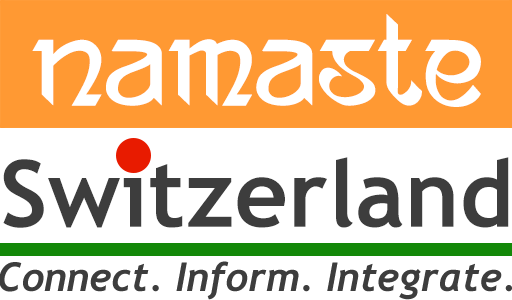“Are you going to study Science or Humanities?” is a question that many teens are used to hearing at a crucial juncture of their lives. People have forgotten eras, such as the Renaissance, when the differentiation between these fields was minimal. We have all heard of Leonardo da Vinci, his magnificent Mona Lisa, and Last Supper paintings. Some of us may also know that he was a scientist, whose work ranged from anatomy to engineering inventions. The art and science fueled each other by imagination and observation.
In today’s world, where these fields are strictly kept apart, we meet a Swiss-resident Dr Pranitha Kamat, who juggles her position as a Research Scientist at the University of Zurich, while pursuing Bharatanatyam through multiple projects, and being a mother to two young children.
Becoming a Vascular Biologist Expert
Dr Kamat’s research work focuses on vasculopathy, which relates to injury or disease of blood vessels. Vasculopathy is a feature in multiple life-threatening or challenging conditions like cardiovascular diseases, stroke, arthritis, and systemic sclerosis.
Explaining further, she says, “I work in vasculopathy that occurs during composite tissue transplantation where different types of tissues are transplanted as a single unit, for example, in the face, arms and legs. Blood vessels form the first region of contact between the host’s blood and the transplanted tissue. It is here where pathological reactions occur during transplantation. By studying its different aspects like the stimuli, disease progression, etc., one can better understand it and find ways to attenuate it.”.
In her career spanning 13 years as a researcher, Dr Kamat has maintained a common thread within her projects, resulting in expertise in Vascular Biology. Her research work began with studying the cells forming the inner lining of blood vessels (the endothelium) during heart infarction for her Ph.D. work at the University of Bern. She moved on to study the endothelium in tumor biology, endothelial glycobiology and now studies the vasculature as a whole in a larger context. In the future, she sees herself applying vascular biology in disciplines like machine learning, biological modelling, and sequencing. A research goal she is looking forward to is to develop models that mimic vasculopathy which will help faster, wider research and not have to use small animals to understand science.
Her Journey to Switzerland
Dr Kamat comes from a strict, protective family. Feeling the need to establish herself, she applied for a Masters’ degree in Scotland, where her brother worked. A PhD offer from Switzerland and the compelling work gave her the leverage to convince her family to agree to the move.
She believes that research in Switzerland is attractive because it is systematic, reliable, and organised. The only downside she finds is the Swiss rigidness with work time, which does not allow for organic work discussions during off-hours.
A Passionate Dancer with a Scientific Mind

Where does Bharatanatyam fit in amongst such significant research work?
A dancer from a young age, Pranitha began her serious dance pursuits during her undergraduate studies and got herself a diploma in Bharatanatyam. Today, she finds that the way to keep her passion alive is to work on performances. With the consent of the temple in Zurich, she practices and presents a new dance routine every month. She also channels a little envy from watching dance performances from professional artistes online, into the motivation she needs to work on new routines.
Not content with her professional pursuits of science and dance as a hobby, she also has several ongoing community outreach projects.
“I co-founded a community for Indian Classical dance, in Switzerland, called ‘Swiss Natya Sabha’ (SNS). We meet every month to perform and discuss different Indian Classical Dance forms. I am working on a project called ‘Natya Chittra’, which literally means ‘picturing dance’. Natya Chittra will be a collection of educational books on dance. The first book is to be released soon from my own publishing house, Vedathek (www.vedathek.in).” In SNS and Natya Chittra, she already sees the benefits of her scientific approach in discussing or illustrating art.
Synergizing Dance and Science
A synergy between her passions has led to another favourite project: the explanation of science through dance. Beautifully describing what made her do this, she says, “Imagining science is very natural to me. At one point, I thought, why not actually perform the illustration of science that I have in my mind? Bharatanatyam is a means of storytelling. The vocabulary with mudras, body movement and facial expressions is extensive, enabling the description of almost anything. So, when I decided to present the story of a biological molecule and its role in cancer, it was obvious for me to use the vocabulary of Bharatanatyam as against free-style dancing. It was very challenging for me to create and perform the piece’ and it was also challenging for the audience to perceive both the science and dance together. But, it was very well received.”.
“Together with two other artists/scientists, we have started a company called ‘Dance Your Science’, where we use Bharatanatyam-based dance movements to communicate scientific concepts to the public.”
An Interplay of Passions
The scientific content for dancing is not the only thing that Dr Kamat has gotten from this synergy. She believes that dance has been her teacher in many respects. Paying attention to detail, staying determined and developing the capacity to imagine are a few of the many attributes she has obtained through dance.
“First of all, just like dance requires precision in limb movements and a focus on details of choreography, music, and stage arrangements, science requires focus on the details of an experiment to develop a good understanding of biology.
Secondly, just as Bharatanatyam requires determination to keep working on a posture until you get it right, with experiments, you keep redesigning the protocol until you can convincingly explain your observations.
Finally, in both, the process of creation develops your capacity to imagine, an essential quality for any artist. For instance, in dance, we might need to imagine how Ganesha would walk with as huge a belly as he has. It would, for sure, not be a normal gait. Similarly, when a research question is asked, I start to imagine the two cells involved, with all their attributes, their microenvironment and how they would interact. This allows me to consider the big picture while staying focused.”
Finally, the big question… how does she manage all this with two young children at home?
She laughs and says “I would not say I have managed! I am still learning. What has helped is staying highly disciplined and organised. Also, I am grateful to my mother who supports me in every way she can, from taking care of the kids every now and then, to equipping my kitchen with instant spice mixtures and sharing easy, healthy recipes. This takes a huge load off my shoulders.
It is natural that mothers are protective and caring towards their children. So, when a mother decides to work alongside taking care of her kids, this should be encouraged and supported. I would really like to change the thinking of a certain sector of society which labels working mothers and questions their care for the child when left in the daycare center or anything similar.
Other than that, I take one day at a time. I have the same goals to live up to for every day: do justice to my science and art, give ample time for my family, and eat well.”
Disclaimer: Written in good faith, we do not undertake any financial/reputational impact or other obligations/liabilities that may arise from the content.












